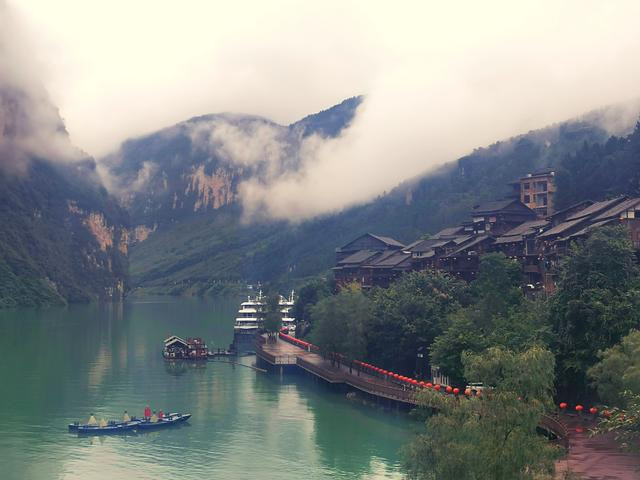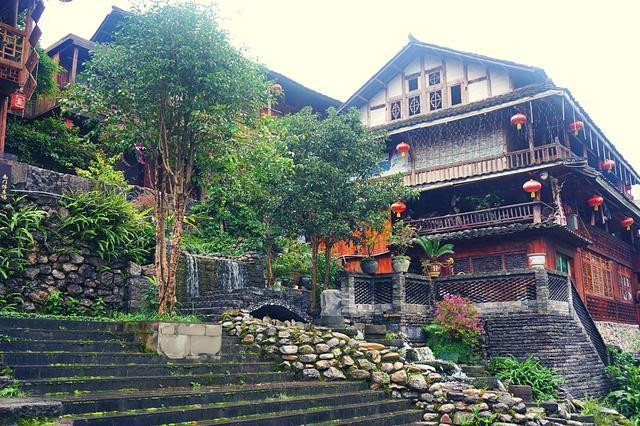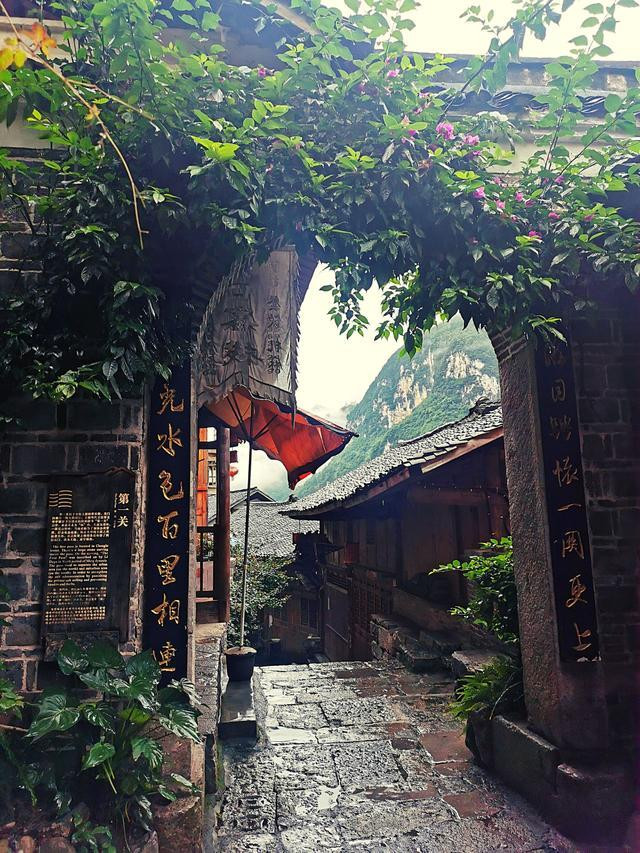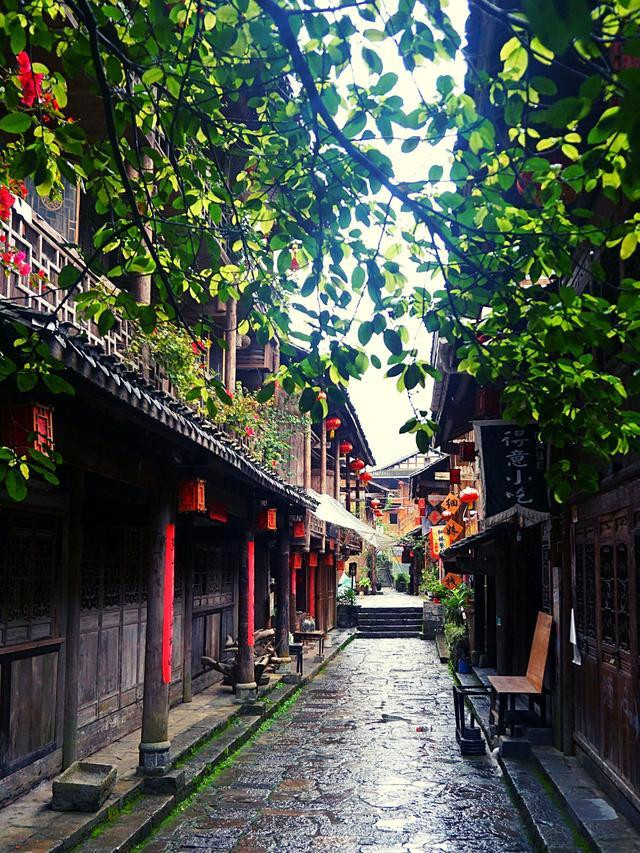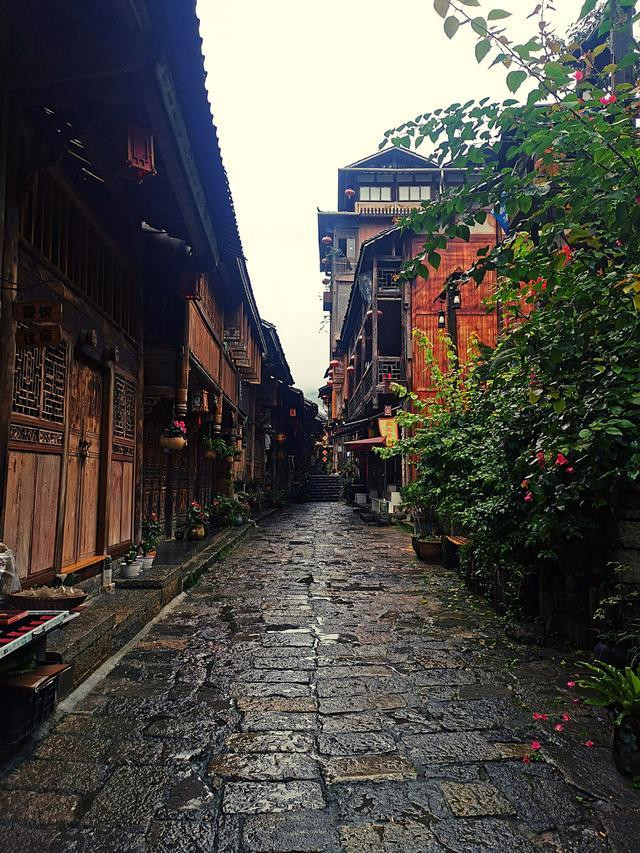Hello everyone, I am Ada, a girl who likes checking in ancient towns and museums. I just returned from Chongqing yesterday. The original plan for this trip to Chongqing was 5 days and 4 nights. Except for 2 days to take the train to and from Wulong, the rest were booked in Chengdu's Main City. According to the Internet celebrity spots, check in at one stop.
But before leaving, a friend asked me: Why don't you go to Gongtan Ancient Town? This... I'm ignorant. Why haven't I heard of it? I searched the Internet for introductions: 1700, Ancient Town, Wujiang River, Diaojiao Tower, Baili Gallery... Seeing these words, I couldn't help myself.
The day I lived in Wulong, I was thinking about how to get to Gongtan Ancient Town. First of all, I asked the owner of the B & B. She didn't know, but she was very enthusiastic and helped me search for the route online. Unfortunately, there was no recommended route in the navigation. So, she suggested that I take the train to Youyang first, and then transfer to Gongtan.
I searched the distance from Youyang to Gongtan. Why is it still 118 kilometers? Wulong used to be more than 100 kilometers. It turns out that Wulong, Youyang and Gongtan just formed a triangle. If you turn to Youyang, it would be a waste of time and money. The best plan is to go to Pengshui and then transfer to Youyang.
The bus from Wulong to Youyang starts at Wulong Passenger Station and starts at 7 a.m., the second bus leaves at 10 a.m., and the bus arrives at Pengshui Passenger Station at 12 noon. After lunch, take the bus and take the bus to Gongtan at 13:30 p.m. Here's a reminder for everyone: There are only two buses a day, 7:30 a.m. and 13:30 p.m., so don't miss it.
It can be said that the journey from Wulong to Gongtan surprised me. Because this national highway was built along the Wujiang River, we followed the Wujiang River all the way to Gongtan. After arriving at Gongtan, it was like a painting. The opposite cliff was like a screen, steep and wide, and the middle was blocked by the Wujiang River. The river water was particularly green and emerald green.
I also specifically checked why such green river water is called "Wujiang". It turned out that during the Tang Dynasty, this river was called "Wuchuan", but in the Yuan Dynasty, there was no consonant of 'v' in Mongolian, so it was replaced by a similar sound, and was finally transcribed into the character "Wu". This ancient town has a history of more than 1700 years. Thousands of years of historical changes and honing have created a unique natural and cultural landscape.
The most distinctive dwelling house is the "Diaojiao Tower", which is different from the Diaojiao Tower built along the river in the plain area. Due to the terrain of Gongtan, there is an obvious gap between height and height. It is more like a Diaojiao Tower built on the edge of a cliff, stacked one after another, built for the mountains, with endless peaks.
I say this is a real ancient town, not because the houses here have a history of more than 1700 years. After all, wooden structures need to be renovated and maintained frequently. Otherwise, even if they are not dangerous buildings, they will definitely be listed as key cultural relics and protected. Moreover, in 2005, the ancient town was relocated to a new location due to the construction of a dam.
The reason why it is a real ancient town is because for thousands of years, people have thrived and continued on this rich land. Even in the Tang and Ming Dynasties, due to its unique geographical location, merchants gathered, and the material distribution centers of Chongqing, Sichuan, Hunan and Guizhou flourished for a time.
To this day, although it no longer undertakes important business transactions, its preserved ancient buildings, historical figures, and beautiful scenery among the mountains are still known as "Chongqing's No. 1 Famous Historical and Cultural Town".
In Gongtan Ancient Town, the most preserved monument is the ancient stele. Among them, the "First Pass" double-hooked stele during the Wanli period of the Ming Dynasty is still intact.
The "Yongding City Rules" monument is located at the entrance of Shiban Road. This monument was erected in the first year of Wanli of the Ming Dynasty (AD 1573). Gongtan was once an important transit point for Sichuan salt to enter Guizhou.
Therefore, the inscription clearly records that He Heng, Zheng Changxin and others are responsible for supervising and implementing the transportation price for getting on and off the ship. The freight rate for each pack of salt loaded into the cabin is 5 cents, and each pack is loaded from the ship and carried to the salt warehouse is increased by 6 cents. It is also stipulated that all porters must be inspected and protected by the salt number and registered by the salt number to prevent chaos in rules.
But when it comes to it, the antique that carries the most memories of life is still this 2-kilometer-long Qingshiban Street, which is composed of bluestone slabs. These bluestone slabs have been lying across the road for hundreds of years. Over the past few centuries, generations have been trampled on again and again with bare feet, straw sandals, cloth shoes, and rubber shoes, but now they are polished until they are smooth and moist.
Among these stone slabs, I found some hollow stone slabs with different shapes. These must be the earliest manhole covers created by the ancestors with wisdom and skills hundreds of years ago.
Ticket Information of Gongtan Ancient Town
First of all, if you go by yourself, you can park your car in the South Gate Parking Lot. Not far away is the South Gate Service Center and Ticket Office. The entrance fee for the ancient city is 16 yuan per person. There is a long elevator next to the ticket office. The top of the elevator is the beginning of Qingshiban Road. Follow Shiban Road, you can explore the old streets of Gongtan Ancient Town.
However, this is only a big ticket for the scenic spot. There are also some old houses sold separately, including: Sanfu Temple 10 yuan, Chuanzhu Temple 10 yuan, Ranjiayuanzi 10 yuan, and Xiqin Guild Hall 40 yuan. The joint ticket is 65 yuan (including 16 yuan ancient city entrance).
One way to save money is to stay in a B & B, because I live in a B & B in ancient town. The boss gave me a key with the nameplate of the B & B on it. He said that if I have this, I don't need to buy tickets, but that long elevator cannot be used for free. As for small tickets for scenic spots, you can completely purchase them according to your own needs.
The fare of the Baili Gallery cruise ship is 158 yuan per person. After boarding the boat in Gongtan Ancient Town, it continues south along the Wujiang River and passes through the Wujiang River and the Apeng River. The round-trip tour takes about one hour.
But if you want to visit the Wujiang River in depth, I can give you a suggestion. You can board the boat from Wanzu Wharf in Pengshui. There is a boat at 13:30 p.m. and reach Gongtan via the waterway. It takes about 100 minutes. The green river water and the steep cliffs, the beautiful scenery on both sides, are not inferior to the Small Three Gorges.
Finally, let me tell you another piece of good news. This year, Chongqing has opened a direct bus to and from Gongtan Ancient Town. It runs once a day and leaves from the Longtou Temple Tourist Passenger Transport Center at 9 a.m., which takes about 5 hours. The departure time of Gongtan Ancient Town is also 9 a.m. every day. The tourist distribution point in the center of the town gets on the bus. The ticket price is 100 yuan/person one way. From Gongtan back to Chongqing, I chose to take this through train, which saved me a lot of travel and travel.
In 1984, Mr. Wu Guanzhong, a famous master of traditional Chinese painting, entered Sichuan to sketch and created famous paintings based on the ancient town of Gongtan: "Wujiang Town" and "On the Bank of the Wujiang River". He lamented: This is Tang Street, Song City, and Grandpa's home... Friends, I hope that when you come here, you can also gain inner peace and retrieve deep memories.


